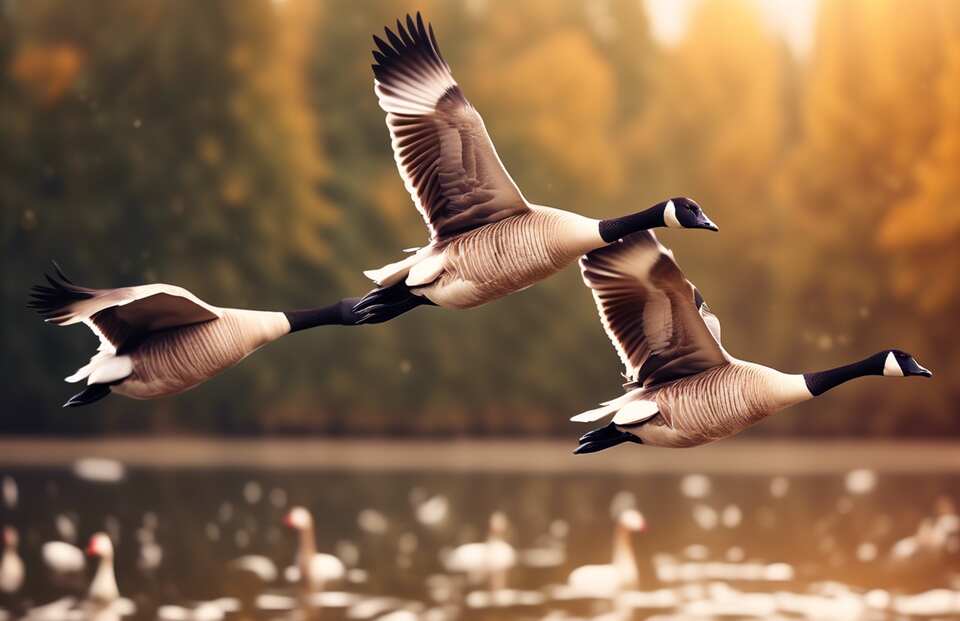Birds have always captivated humans with their incredible ability to fly. From the majestic eagle soaring high above the mountains to the tiny hummingbird flitting around flowers, each bird species has its unique flight capabilities. One of the most intriguing aspects of avian flight is the altitude at which birds can soar. Several key factors influence how high birds can fly, ranging from physiological adaptations to environmental conditions.
Table of Contents
Factors Influencing the Altitude Birds Can Fly
Physiological Factors: Oxygen Efficiency and Muscle Strength
One of the primary factors influencing how high birds can fly is their physiological adaptations. Birds have highly efficient respiratory systems that enable them to extract oxygen from the air more effectively than mammals. This is essential for flying at high altitudes where oxygen levels are lower. Additionally, birds have powerful chest muscles that allow them to flap their wings rapidly and generate enough lift to stay airborne at higher altitudes.
Wing Shape and Aspect Ratio: Aerodynamics for Altitude
The shape of a bird’s wings plays a crucial role in determining how high they can fly. Birds with long, narrow wings and high aspect ratios, such as albatrosses and frigatebirds, are adapted for soaring flight at high altitudes. These wings are designed to minimize air resistance and maximize lift, allowing the birds to glide effortlessly for long distances at significant heights.
Migration Patterns and Altitude Variation
Migration is another key factor that influences the altitude at which birds can fly. Many bird species undertake seasonal migrations covering vast distances, often crossing mountain ranges and even flying over the highest peaks. During these migrations, birds must navigate through varying altitudes, requiring them to adjust their flight patterns and physiology accordingly. Some birds, like bar-headed geese, are known for their ability to fly over the Himalayas, the highest mountain range in the world.
Environmental Factors: Weather Patterns and Air Pressure
Environmental conditions also play a significant role in determining how high birds can fly. Weather patterns, such as high winds or storms, can impact a bird’s ability to maintain altitude. Air pressure changes with altitude, affecting the lift generated by a bird’s wings. Birds have evolved to sense and respond to these environmental cues, adjusting their flight behaviors to optimize their altitude and conserve energy during long-distance flights.
The altitude at which birds can fly is influenced by a combination of physiological adaptations, wing morphology, migration patterns, and environmental factors. Birds have evolved remarkable abilities to navigate and soar at high altitudes, showcasing the wonders of avian flight. By understanding these factors influencing altitude in birds, we can appreciate the complexity and beauty of their aerial journeys across the skies.

Comparison of Flying Heights Among Different Bird Species
Birds are known for their incredible flying abilities, soaring across the skies with grace and ease. One fascinating aspect of birds’ flight capabilities is the heights they can reach. Different bird species have varying flying heights, influenced by their physiology, behavior, and habitat. Understanding these differences can provide valuable insights into the diversity and adaptability of avian life.
The Stratospheric Journey of Bar-headed Geese
Bar-headed geese are renowned for their exceptional high-flying abilities. These waterfowl are known to migrate over the Himalayas, the world’s highest mountain range. During their journey, bar-headed geese have been recorded flying at altitudes exceeding 29,000 feet (8800 meters). This remarkable feat showcases their remarkable adaptation to thin air and harsh conditions, making them one of the highest-flying bird species on the planet.
Alpine Choughs: Masters of Mountain Heights
Alpine choughs are another bird species that have adapted to high-altitude environments. These corvids are often spotted in the rocky regions of the Alps and other mountainous areas. Alpine choughs are known to soar to impressive heights, with recorded flights surpassing 26,000 feet (7900 meters). Their mastery of mountain heights demonstrates their agility and resilience in challenging terrains.
Vultures: Soaring High in the Sky
Vultures are majestic birds of prey known for their soaring flights as they search for carrion. These scavengers have been observed flying at great heights, with some species such as the Rüppell’s vulture reaching elevations of up to 37,000 feet (11,300 meters) or more. Vultures’ broad wings and keen sense of smell aid them in detecting food from lofty vantage points, allowing them to efficiently navigate vast territories.
The Elevated Domain of Andean Condors
Andean condors, the largest flying birds in the world, are found in the high Andes mountains of South America. These impressive birds are adapted to the thin air of their high-altitude habitats, where they can reach altitudes exceeding 15,000 feet (4600 meters). Andean condors’ massive wingspan enables them to glide effortlessly through the mountainous terrain, showcasing their mastery of the skies.
The heights at which birds can fly vary significantly among different species, with some showcasing exceptional altitudinal feats. From the stratospheric journeys of bar-headed geese to the mountain mastery of alpine choughs, vultures’ sky-high soaring, and Andean condors’ elevation domain, birds’ flying heights are a testament to their remarkable adaptations. By exploring and appreciating these flying heights, we gain a deeper appreciation for the diverse and awe-inspiring world of avian flight.
Conclusion
In a world where the skies are the limit, birds soar to astonishing heights fueled by their remarkable adaptations and behaviors. When examining the factors that influence the altitude birds can fly, it becomes evident that a combination of physiological, environmental, and species-specific elements dictates their aerial capabilities. From the physiological adaptations of their respiratory and cardiovascular systems to the environmental factors like wind currents and temperature gradients, birds have evolved to conquer the skies with unparalleled grace and efficiency.
Different bird species exhibit varying flying heights, reflecting their unique evolutionary paths and ecological niches. Raptors such as eagles and vultures are known for their impressive soaring abilities, reaching altitudes that surpass the highest peaks on Earth. These majestic birds leverage thermal updrafts and mountainous terrain to effortlessly glide through the skies, scouting for prey or soaring to their nesting sites with unparalleled precision.
Conversely, seabirds like the albatross showcase a different kind of aerial mastery, utilizing oceanic winds and air currents to traverse vast distances with minimal effort. These oceanic wanderers can reach remarkable altitudes as they embark on their transoceanic journeys, showcasing the adaptability and resilience that define their existence in some of the most challenging environments on the planet.
Passerines, or perching birds, display a different kind of flight prowess, characterized by their agility and maneuverability in densely forested environments. These birds navigate complex aerial pathways with precision, darting through branches and foliage with unparalleled speed and accuracy. While their flying heights may not rival those of high-soaring raptors, passerines excel in conquering the intricate three-dimensional space of their habitats with finesse and skill.
When comparing the flying heights among different bird species, it is essential to consider the diverse strategies and adaptations that have shaped their aerial behaviors. From the dizzying heights of migratory birds like bar-headed geese, which cross the formidable Himalayan peaks on their way to wintering grounds, to the low-level flights of forest-dwelling woodcocks that navigate dense vegetation with stealth and grace, each bird species has honed its flying abilities to suit its unique ecological niche and life history.
As we delve deeper into the realm of avian flight, we uncover a tapestry of evolutionary marvels and ecological intricacies that define the aerial lives of birds. The altitude birds can reach is not just a testament to their physical abilities but also a reflection of their resilience, adaptability, and sheer determination to conquer the skies. From the highest peaks to the deepest oceans, birds defy gravity with unparalleled grace, showcasing the beauty and wonder of flight in all its diverse forms.
In this ever-changing world where the skies beckon with boundless possibilities, birds stand as ambassadors of freedom, resilience, and the enduring spirit of exploration. As we gaze up at the heavens and marvel at the soaring silhouettes of these feathered marvels, let us remember that the altitude birds can fly is not just a measure of their physical prowess but a symbol of the unyielding tenacity and indomitable spirit that defines their existence in a world governed by the whims of the wind and the infinite expanse of the sky.


